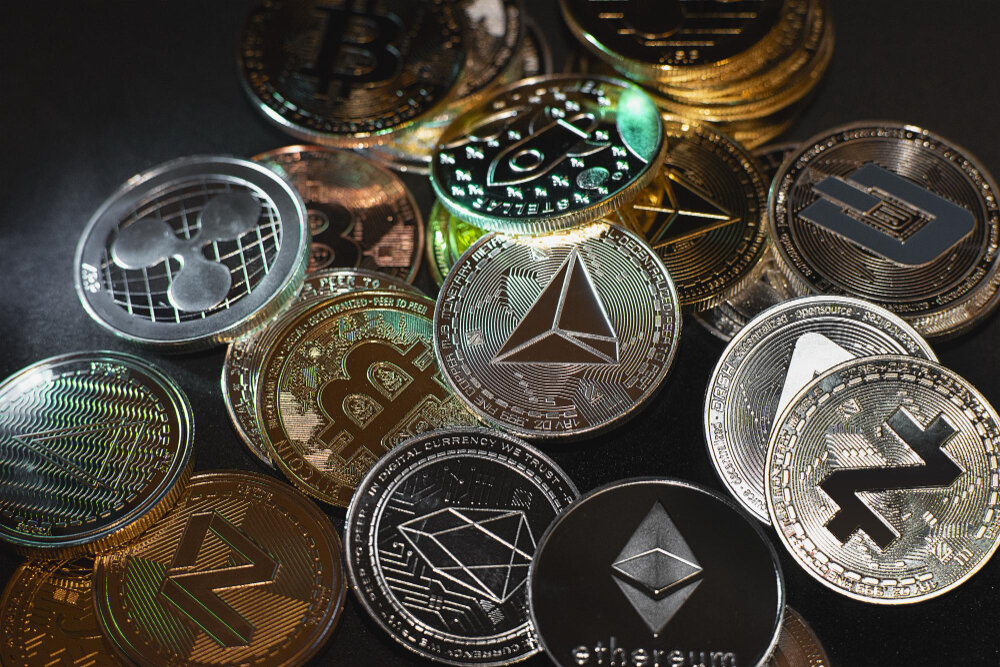What are all the cryptocurrencies
Almost. We have a process that we use to verify assets. Once verified, we create a coin description page like this. The world of crypto now contains many coins and tokens that we feel unable to verify https://elmergernaleartworks.com/live-casino/live-roulette/. In those situations, our Dexscan product lists them automatically by taking on-chain data for newly created smart contracts. We do not cover every chain, but at the time of writing we track the top 70 crypto chains, which means that we list more than 97% of all tokens.
Here at CoinMarketCap, we work very hard to ensure that all the relevant and up-to-date information about cryptocurrencies, coins and tokens can be located in one easily discoverable place. From the very first day, the goal was for the site to be the number one location online for crypto market data, and we work hard to empower our users with our unbiased and accurate information.
The market cap of bitcoin and other major cryptocurrenciesare are listed below from largest market capitalization to smallest. Cryptocurrencies are also known as coins or virtual currency. The value of bitcoin is growing with time and is the largest currency by market cap currently. The currency data below is updated once every five minutes with the latest market cap data. Exchange rates for the currencies are shown in U.S. dollars. New coins are being brought to market via initial coin offerings frequently so expect the list of cryptocurrencies below to grow.
These crypto coins have their own blockchains which use proof of work mining or proof of stake in some form. They are listed with the largest coin by market capitalization first and then in descending order. To reorder the list, just click on one of the column headers, for example, 7d, and the list will be reordered to show the highest or lowest coins first.

Do all cryptocurrencies use blockchain
This decentralized approach ensures that no single party can manipulate the system. It also makes blockchain inherently resistant to hacking, as changing one part of the blockchain would require altering the entire chain, which would be practically impossible.
A blockchain is a distributed network of files chained together using programs that create hashes, or strings of numbers and letters that represent the information contained in the files. Every network participant is a computer or device that compares these hashes to the one they generate. If there is a match, the file is kept. If there isn’t, the file is rejected.
Some see DAGs as an alternative that combats the shortcomings of blockchain technology, but it would be false to claim that one technology is better than the other. In the world of cryptocurrency, people often try to build hype around the technology they invested in. This leads to the creation of buzzwords like “blockchain killer,” meant to portray DAGs as technologically superior to blockchain.
For all of its complexity, blockchain’s potential as a decentralized form of record-keeping is almost without limit. From greater user privacy and heightened security to lower processing fees and fewer errors, blockchain technology may very well see applications beyond those outlined above. But there are also some disadvantages.
As in the IBM Food Trust example, suppliers can use blockchain to record the origins of materials that they have purchased. This would allow companies to verify the authenticity of not only their products but also common labels such as “Organic,” “Local,” and “Fair Trade.”
Are all cryptocurrencies mined
As someone who has explored the world of cryptocurrency mining for a while, I can confidently say that mining remains one of the most popular ways to earn cryptocurrencies. When we talk about mineable cryptocurrencies, we are referring to coins or tokens that can be obtained through the process of mining, a method that involves using computer power to validate transactions and secure the blockchain network. If you’re considering mining cryptocurrencies, understanding the different types of mineable coins, the mining process itself, and the rewards involved is crucial. This guide will take you through the top mineable cryptocurrencies, compare their features, and give you a clear understanding of how mining works for each.
Litecoin, created by Charlie Lee in 2011, is often referred to as the silver to Bitcoin’s gold. Litecoin uses the Scrypt algorithm, which was designed to be more memory-intensive and resistant to ASIC mining, making it more accessible for regular miners using GPUs.
However, if they do not have the skillset or the computer science knowledge to audit code, they can choose to trust that other people, more knowledgeable than them, understand and monitor the system; they can trust the overall blockchain community that is managing the particular cryptocurrency.
Using an online mining calculator, we can determine that the daily profit for 100 TH/s could be around $5-10, depending on electricity costs and other variables. Keep in mind that this is just an estimate; actual profitability fluctuates with network difficulty and Bitcoin’s price.

As someone who has explored the world of cryptocurrency mining for a while, I can confidently say that mining remains one of the most popular ways to earn cryptocurrencies. When we talk about mineable cryptocurrencies, we are referring to coins or tokens that can be obtained through the process of mining, a method that involves using computer power to validate transactions and secure the blockchain network. If you’re considering mining cryptocurrencies, understanding the different types of mineable coins, the mining process itself, and the rewards involved is crucial. This guide will take you through the top mineable cryptocurrencies, compare their features, and give you a clear understanding of how mining works for each.
Litecoin, created by Charlie Lee in 2011, is often referred to as the silver to Bitcoin’s gold. Litecoin uses the Scrypt algorithm, which was designed to be more memory-intensive and resistant to ASIC mining, making it more accessible for regular miners using GPUs.
Cryptocurrencies all
At the time of writing, we estimate that there are more than 2 million pairs being traded, made up of coins, tokens and projects in the global coin market. As mentioned above, we have a due diligence process that we apply to new coins before they are listed. This process controls how many of the cryptocurrencies from the global market are represented on our site.
CoinMarketCap does not offer financial or investment advice about which cryptocurrency, token or asset does or does not make a good investment, nor do we offer advice about the timing of purchases or sales. We are strictly a data company. Please remember that the prices, yields and values of financial assets change. This means that any capital you may invest is at risk. We recommend seeking the advice of a professional investment advisor for guidance related to your personal circumstances.
The very first cryptocurrency was Bitcoin. Since it is open source, it is possible for other people to use the majority of the code, make a few changes and then launch their own separate currency. Many people have done exactly this. Some of these coins are very similar to Bitcoin, with just one or two amended features (such as Litecoin), while others are very different, with varying models of security, issuance and governance. However, they all share the same moniker — every coin issued after Bitcoin is considered to be an altcoin.
Cryptocurrencies are digital assets that are secured by cryptography. They use decentralized networks to transfer and store value, and the transactions are recorded in a publicly distributed ledger known as the blockchain. Transactions are verified by network nodes and recorded in a public distributed ledger known as the blockchain. Cryptocurrency transactions are secure, and are verified by a decentralized network of computers.
Coinlore Independent Cryptocurrency Research Platform: We offer a wide range of metrics including live prices, market cap, trading volumes, historical prices, yearly price history, charts, exchange information, buying guides, crypto wallets, ICO data, converter, news, and price predictions for both short and long-term periods. Coinlore aggregates data from multiple sources to ensure comprehensive coverage of all relevant information and events. Additionally, we provide APIs and widgets for developers and enterprise users.

